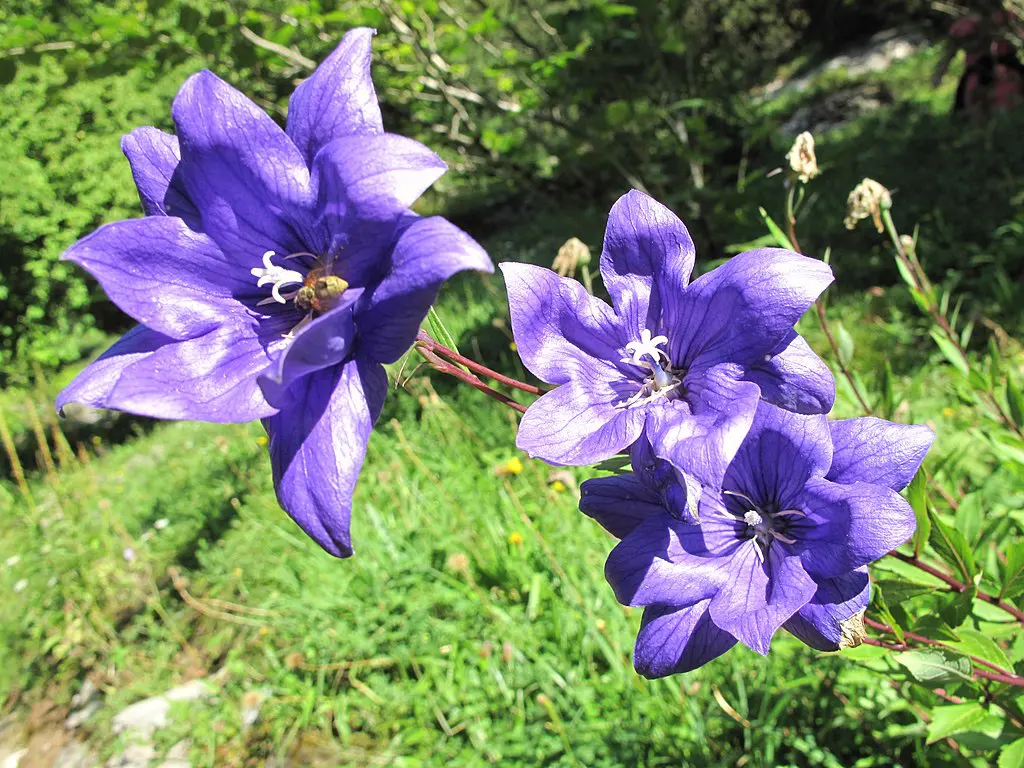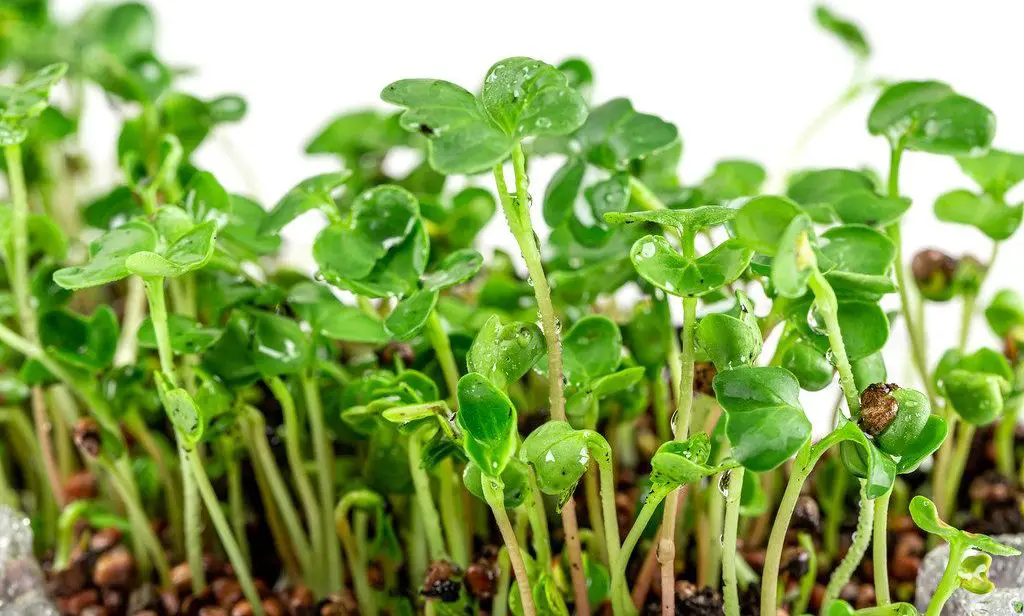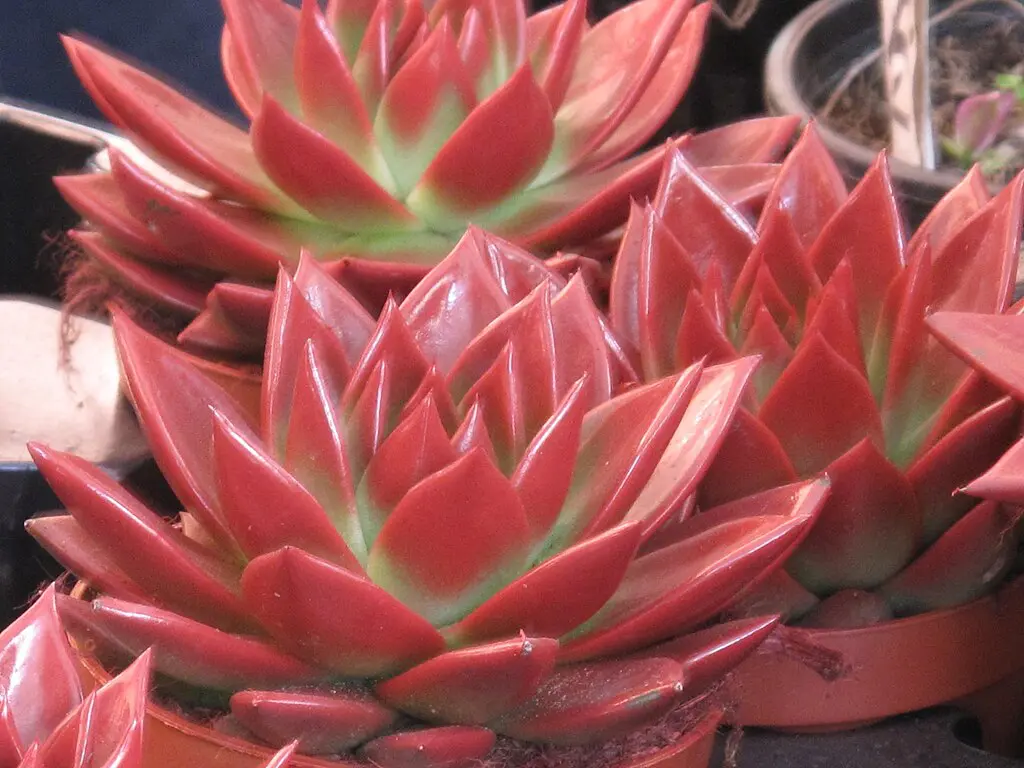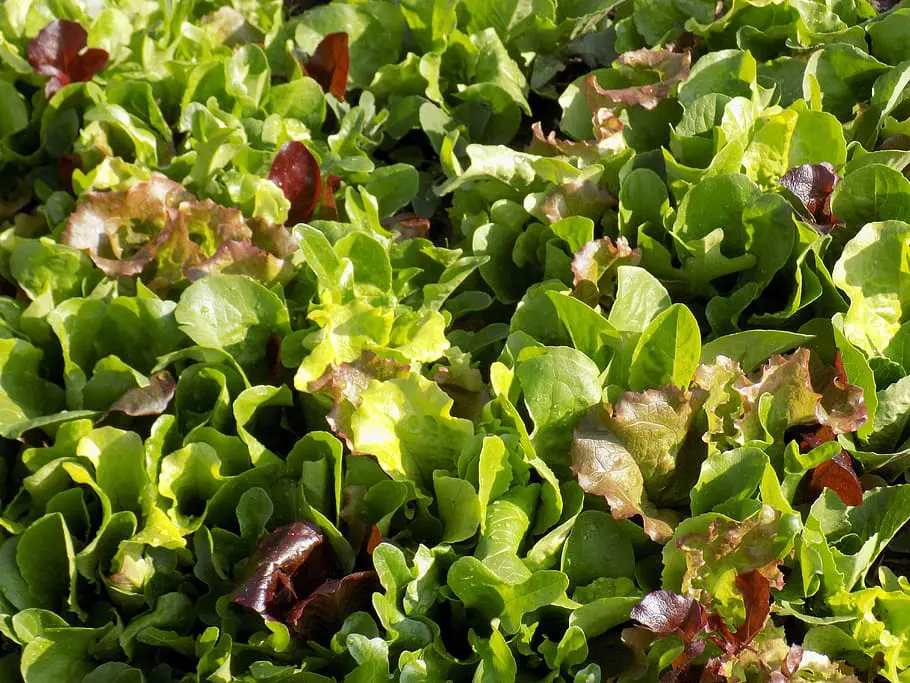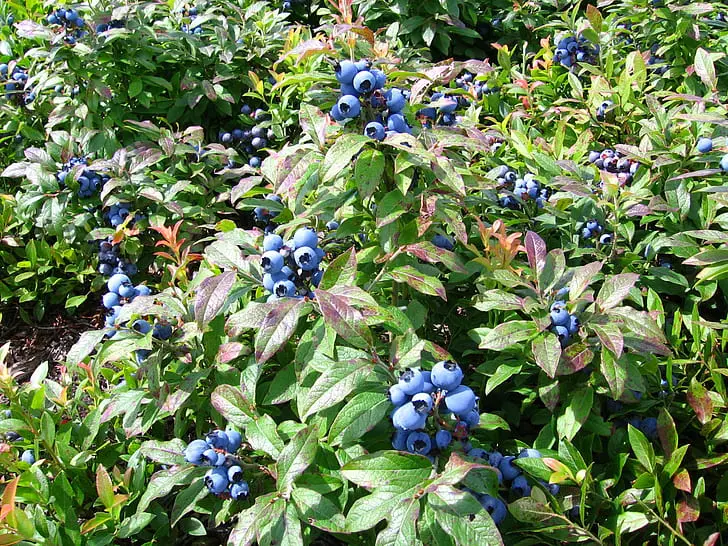This post contains affiliate links. If you buy something from one of our links we may earn a commission. Thanks
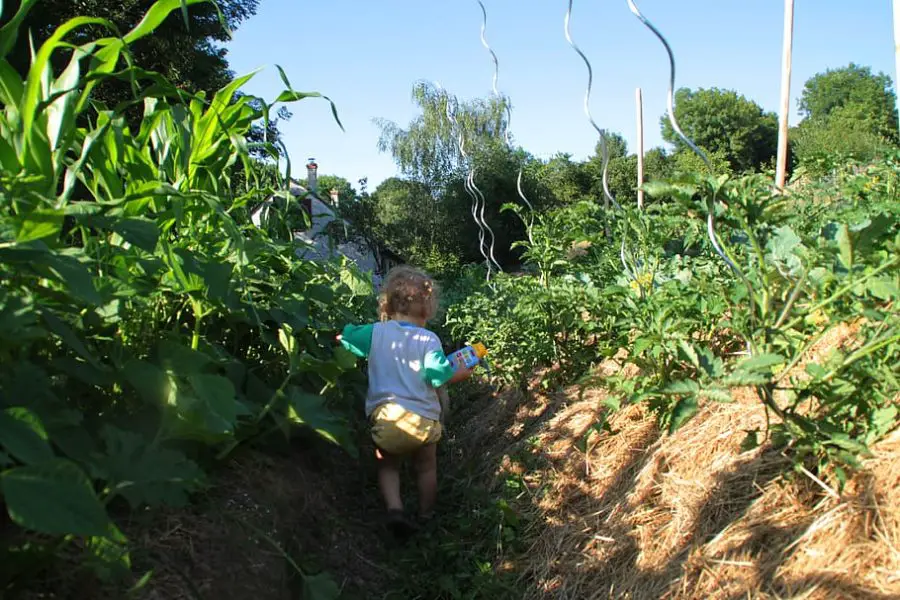
Dive into the engaging world of permaculture farming! Learn not only how does permaculture work but its roots and current practices in our comprehensive guide.
How does permaculture work? Permaculture is a design system that mimics natural ecosystems to create sustainable human habitats. It integrates land, resources, and people, focusing on the relationships between elements. The approach uses principles like diversity, redundancy, and closed-loop systems to minimize waste and maximize efficiency. The aim is to meet human needs while enhancing the environment.
Ever found yourself gazing at a thriving garden and wondering, how does permaculture work to create such a balanced, self-sustaining system?
Let’s unravel this eco-friendly mystery together and discover the magic behind nature’s most harmonious dance.
How Does Permaculture Work
Permaculture works by integrating nature’s principles into sustainable farming practices, prioritizing ecological balance, resource conservation, and self-sufficient systems.
Ever thought of diving into the fascinating world of sustainable farming?
Today, we’ll journey through the ins and outs of permaculture, exploring its principles, origins, and how they merge traditional and modern farming techniques. Get ready for a deep dive!
Brief on Permaculture:
Think of permaculture as the bridge between the wisdom of our ancestors and cutting-edge sustainable practices.
It’s a system that combines age-old farming techniques with modern sustainability concepts.
Importance of Sustainable Farming:
Sustainable farming isn’t just a trend. It’s a response to our changing world, focusing on long-term ecological health and community well-being.
The Roots of Permaculture in Farming
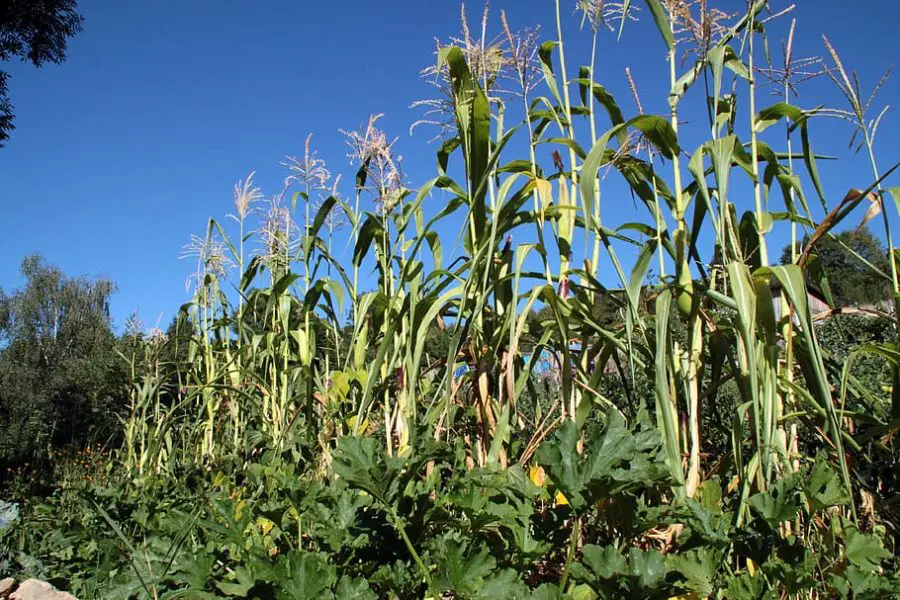
Ready to take a trip down memory lane? Before we dive into the nitty-gritty of permaculture practices today, let’s hop into our time machine and explore the roots of permaculture in farming.
Trust me, understanding where it all began makes the journey ahead even more fascinating!
Bill Mollison and David Holmgren:
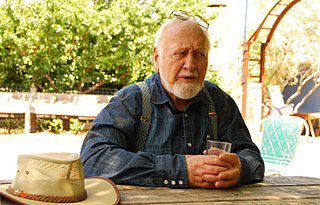
The story begins in the 1970s with these two Australian ecologists.
Their shared vision of a sustainable agricultural system eventually blossomed into what we now recognize as permaculture.
Traditional Farming Methods that Influenced Permaculture:
Traditional farming, with its close connection to the land and seasons, served as a foundation.
Ancient practices, like crop rotation and natural pest management, are pillars in permaculture.
Core Principles of Permaculture in Farming
Alright, let’s get to the heart of the matter! Imagine having a recipe for the perfect sustainable farm.
Well, the core principles of permaculture in farming are just that – a set of guidelines that nature itself approves of.
Grab your notepad; we’re about to dive into the essential ingredients that make permaculture a game-changer in the world of agriculture.
Let’s dive right into the meat of permaculture by exploring its core principles in the context of farming.
Observe and Interact:
Picture yourself as a detective, but instead of solving crimes, you’re studying the lay of the land.
This means tuning in to the rhythm of the seasons, understanding the behaviors of native species, and working with nature rather than against it.
It’s like being in tune with a song that Mother Earth constantly hums.
Catch and Store Energy:
Now, imagine the Earth as a massive battery. Every raindrop and sunbeam is a charge we can harness.
By building robust soil health and capturing rainwater, we’re essentially storing energy for leaner times.
It’s like putting away money in a savings account for a rainy day.
Obtain a Yield:
At the end of the day, farming is also about reaping what you sow.
This principle ensures that while we’re caring for the land, we’re also getting a productive harvest.
Think of it as the delightful dessert after a hearty meal.
Apply Self-Regulation and Accept Feedback:
This is about humility and learning. Just like how we appreciate constructive feedback in our daily lives, we adjust farming practices based on the land’s feedback.
If a crop isn’t thriving, it’s time to switch things up!
Use and Value Renewable Resources:
Fancy using resources that never run out? From natural fertilizers like compost to integrating animals that naturally enrich the land, it’s about using resources that regenerate.
Produce No Waste:
Picture a world where everything has a purpose. Leftover plant material? That goes into compost. Animals on the farm? Their waste enriches the soil. It’s the circle of life in action, ensuring nothing is left unused.
Design from Patterns to Details:
Think of this as a painting. Before getting into the intricate details, we sketch the broader picture.
It’s about reading the landscape, understanding its natural design, and then tailoring our interventions.
Integrate Rather Than Segregate:
Ever noticed how certain plants thrive together? That’s no coincidence!
Companion planting and crop rotation ensure plants help each other grow, rather than compete.
Use Small and Slow Solutions:
Rome wasn’t built in a day, and neither is a perfect permaculture farm.
Starting with small pilot plots allows us to test and learn. It’s like tasting a dish before serving it to guests.
Use and Value Diversity:
Just like a diversified stock portfolio is more resilient, a farm that has a mix of crops and diverse animal breeds is stronger against threats and yields better.
Use Edges and Value the Marginal:
In nature, the action often happens at the edges – where the forest meets the meadow or the pond meets the land.
Using these edge spaces, like hedgerows and pond boundaries, maximizes productivity.
Creatively Use and Respond to Change:
Change is the only constant, right? Whether it’s a sudden climate shift or a new pest, permaculture teaches us to adapt, innovate, and overcome. It’s like adjusting sails based on the wind’s direction.
By understanding and applying these principles, we truly embrace the heart and soul of permaculture, creating farms that are not only productive but also in harmony with nature.
Designing a Permaculture Farm
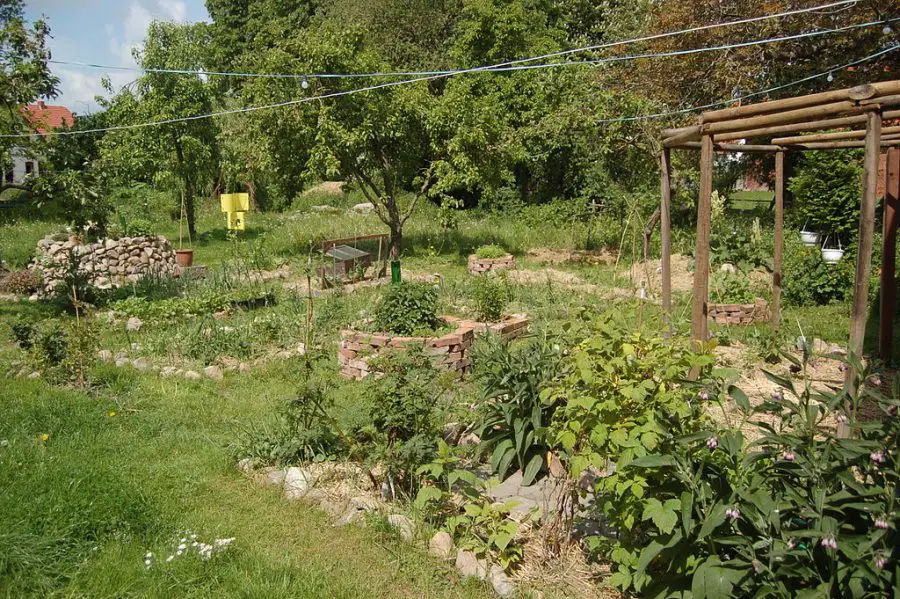
Alright, picture this: You’ve got a blank canvas in front of you, and it’s your job to paint a masterpiece but this time, it’s a living, breathing farm.
Designing a permaculture farm isn’t just about planting seeds and hoping for the best.
It’s about crafting a space where every element, from the tiniest insect to the largest tree, plays a part in a harmonious symphony.
So, ready to channel your inner Beethoven of farming? Let’s jump into the art of designing a sustainable, self-sufficient permaculture paradise!
Zones:
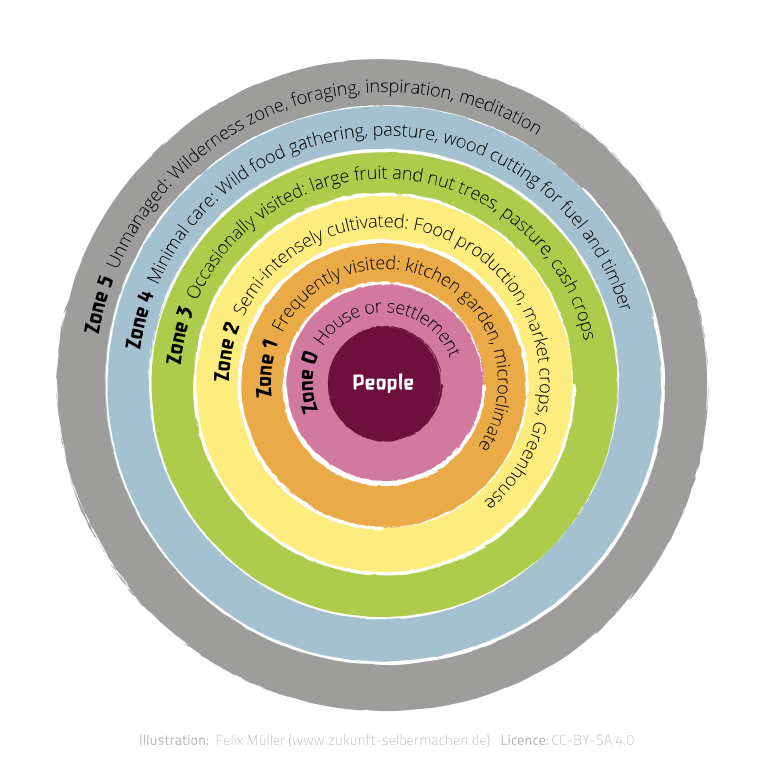
Imagine your farm as your home. Just like you wouldn’t put your bedroom in the middle of the kitchen, certain areas of your farm are best suited for certain activities.
The idea behind zones is that the most frequently visited areas (like your herb garden) should be closest to your house, while less frequented ones (maybe a wild forest patch) can be further away. As we move outward from the home:
Zone 0 is the home itself.
Zone 1 might include herbs and salad crops—things you’d want to access daily.
Zone 2 could house fruit trees and some animals.
Zone 3 may be where larger crops or orchards lie.
Zone 4 is semi-wild, maybe a space for foraging.
And Zone 5? Pure wilderness. A space for nature to run its course.
It’s all about efficiency and practicality, matching human activity with plant and animal needs.
Layers:
Remember those fancy layer cakes with different flavors on each level? That’s what we’re aiming for but with plants!
In nature, plants grow at different heights and occupy different spaces. So, in a permaculture farm:
• Canopy: Large fruit and nut trees.
• Low-tree layer: Dwarf fruit trees.
• Shrub layer: Currants and berries.
• Herb layer: Culinary herbs, ground cover crops.
• Root layer: Plants that grow underground like potatoes.
• Vertical layer: Climbers and vines.
• Aquatic/Wetland: Plants that thrive in ponds or damp conditions.
This design maximizes space and mimics natural ecosystems, allowing multiple species to co-exist harmoniously.
Water Management:
Water is the lifeblood of a farm. In permaculture, we treat it like the precious resource it is.
Swales: Think of these as speed bumps for water, slowing its movement and allowing it to seep into the landscape.
Keyline plowing: This is a neat technique that directs water away from areas where it could erode soil, guiding it to where it’s needed most.
Ponds: Not just for ducks! Ponds can be strategic reservoirs, storing water for drier times.
Natural water catchment: This involves sculpting the land subtly to catch and hold rainwater, maximizing its benefit.
Soil Health:
Soil is the unsung hero of the farm. It’s not just dirt; it’s a living, breathing entity filled with organisms that bring life to plants.
Natural fertilization: Think of compost, worm castings, and green manures. They feed the soil, making it rich and fertile.
Cover cropping: These are plants grown primarily to enhance soil health, reduce weed growth, and prevent soil erosion.
No-till methods: Turning over the soil can disturb its structure and the beneficial critters living in it. No-till methods mean less work for you and a happier soil ecosystem.
By weaving these elements into the fabric of a farm’s design, we’re setting the stage for a space that’s not only productive but also resilient and harmonious with nature.
Animals in Permaculture
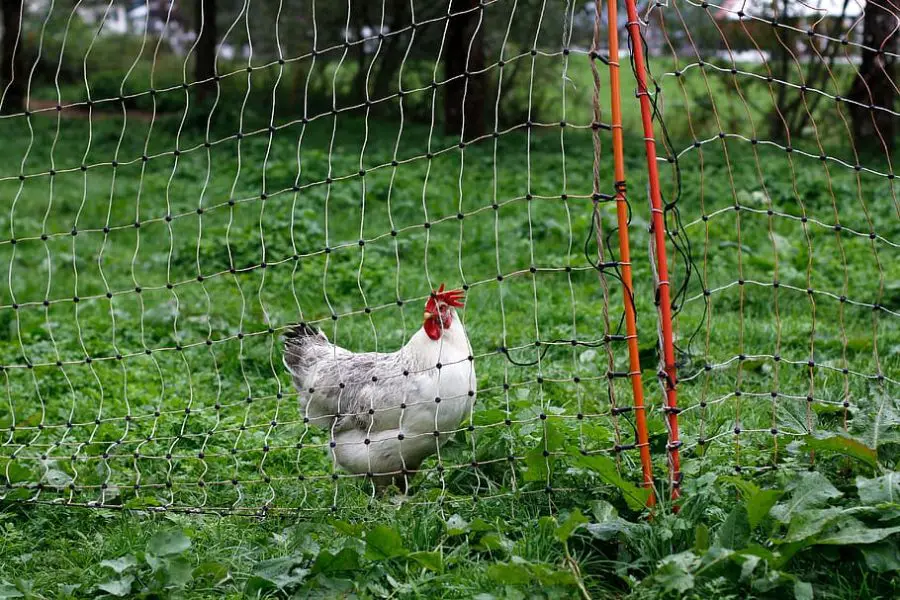
Imagine your farm as a bustling village fair, where everyone from the livestock to the tiniest insects plays a pivotal role.
They aren’t just there to look pretty or provide us with food; they’re our collaborators in this grand project.
Animals in permaculture are like the backstage crew in a theater production working tirelessly, often out of sight, ensuring every scene flows seamlessly.
From chickens scratching the ground in search of pests to goats helping in natural pruning, let’s explore how these unsung heroes fit into the vibrant tapestry of permaculture!
Chicken tractors, rotational grazing, and integrated pest management:
Chicken tractors: Picture this: a mobile chicken coop without a floor. Sounds quirky, right? But it’s genius!
Chickens can peck and scratch at the ground, eating pests, and weeds, and turning the soil over.
Then, you simply move the tractor to a new spot, and the chickens get a fresh dining area while the previously grazed area rejuvenates.
Over time, you get healthier soil, fewer pests, and some very happy hens!
Rotational grazing: Think of it as a vacation for your livestock. Animals are moved around different pasture areas rather than being confined to a single space.
This not only gives pastures time to recover but also disrupts the life cycle of pests.
For instance, cows might graze in one area, followed by sheep or goats in the next rotation.
This mix ensures that the grass is grazed at different heights and parasites specific to one species don’t get comfortable.
Integrated Pest Management (IPM): Forget those pesky chemical pesticides.
IPM is all about using animals to manage pests naturally. Ducks, for example, adore snacking on slugs. Certain breeds of chickens are avid hunters of ticks.
By introducing these animals into your farm ecosystem, you’re recruiting a brigade of natural pest controllers.
Beneficial relationships: How certain animals can benefit crops and vice versa:
Have you ever noticed how some people just naturally work well together, complementing each other’s strengths and weaknesses?
Animals and crops have those synergistic relationships too!
For instance, planting clover in pastures can provide a nitrogen boost to the soil, which in turn benefits grazing animals like sheep.
The sheep get a nutritious bite, and in return, their manure enriches the soil further.
Bees and crops are another power duo. While bees flit from flower to flower collecting nectar, they pollinate crops. This means a better harvest for you and more food for the bees.
Then there are pigs, nature’s ploughs. Ever had a patch of land overrun with brambles?
Let pigs loose, and they’ll root up the ground, making it ready for planting while feasting on roots and pests.
In these harmonious exchanges, both parties benefit, creating a cycle of health and abundance.
It’s nature’s way of reminding us that we’re all connected, and when we work together, wonderful things can happen.
Perennial vs. Annual Crops
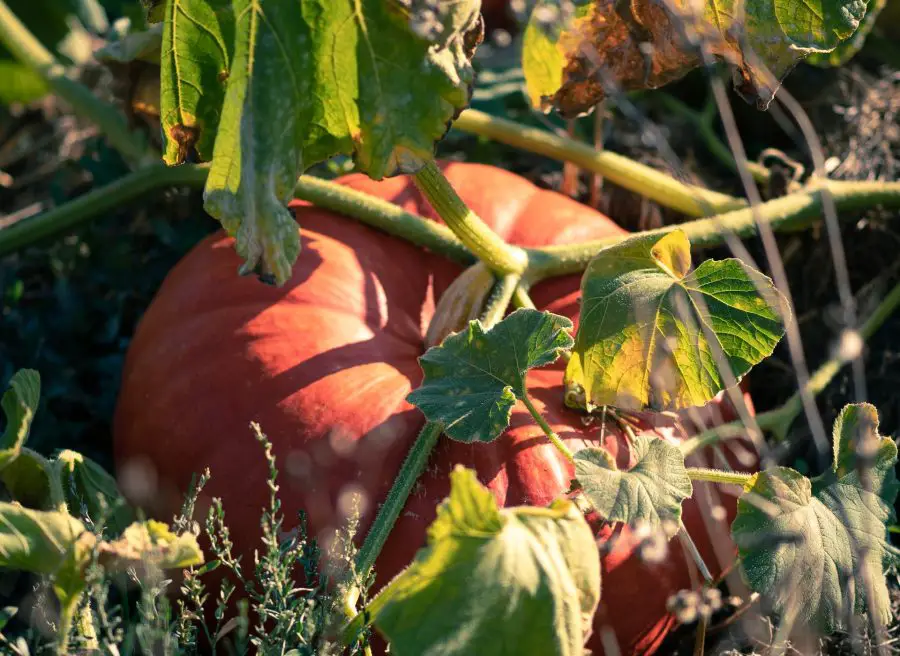
Ever faced the dilemma of choosing between that trendy annual haircut and a timeless classic that requires minimal upkeep?
It’s kind of like that in the farming world too! Deciding between perennial and annual crops is like picking between two unique hairstyles, each with its own set of perks.
One brings a splash of vibrant, seasonal energy, while the other offers longevity and a rooted presence.
As we delve into the captivating world of perennials versus annuals, we’ll discover how each has its own rhythm and role in the dance of permaculture farming. Let’s dive in, shall we?
Advantages of perennial systems in permaculture:
Perennials: The Everlasting Friends of the Soil: Just like those long-time pals who’ve seen you through thick and thin, perennials have an enduring relationship with the land.
They come back year after year, offering multiple harvests from a single planting effort. Now, isn’t that efficient?
Deep Root Systems: These plants have deep roots that penetrate the subsoil, accessing nutrients that annuals can’t reach.
This not only helps them survive in tougher conditions but also improves soil structure by preventing erosion.
Less Work, More Gain: Once they’re established, perennials often require less maintenance.
You can bid goodbye to yearly tilling and say hello to a more hands-off approach.
Biodiversity Boost: Variety is the spice of life! A perennial system brings diverse plant species together, creating habitats for beneficial insects and wildlife.
This diversity strengthens the ecosystem, making it more resilient to pests and diseases.
Soil Champions: Perennials are stellar when it comes to soil conservation.
Their year-round presence ensures the soil remains covered, retaining moisture, and reducing water runoff.
Combining annuals and perennials for maximum yield and soil health:
The Dynamic Duo: Think of annuals and perennials as the dynamic duo of the plant world. Each has its strengths, and when combined, they create a powerful synergy.
Seasonal Bursts and Steady Supply: While perennials offer a consistent yield over the years, annuals give that burst of productivity in their season.
This mix ensures you get the best of both worlds: a regular supply and seasonal delights.
Living Mulch and Ground Cover: Some annuals can act as living mulch, providing ground cover and keeping those pesky weeds at bay.
This can complement perennials, which might take longer to establish and spread.
Nutrient Balancing Act: Certain annuals, like legumes, are pros at fixing nitrogen in the soil.
When grown alongside nitrogen-loving perennials, it’s like setting up a buddy system where one helps out the other.
Filling the Gaps: There might be areas in your farm where perennials take time to fill in.
Annuals can be your quick-fix solution, occupying spaces, and ensuring you get a yield while your perennials grow and spread.
By understanding and appreciating the strengths of both annuals and perennials, permaculture practitioners can design a harmonious dance between these two, optimizing yield and ensuring soil health.
It’s like having the best of both worlds, right in your backyard!
Challenges in Permaculture Farming
Alright, picture this: You’ve just started learning to play a new musical instrument. The initial notes might seem a tad tricky, and sometimes, you might even wonder if you’re cut out for it.
But with time and perseverance, the melodies start flowing. Similarly, venturing into permaculture farming can come with its set of challenges.
It’s not all sunshine and rainbows; there are days with a hint of rain.
As we journey through this section, we’ll unpack some of the hurdles farmers may encounter while embracing permaculture.
But remember, every challenge is just an opportunity in disguise! Let’s navigate these twists and turns together.
Initial setup costs and time
Let’s start with the elephant in the room, the initial setup costs.
Just like investing in a new business or any endeavor, permaculture also has its start-up costs.
From land shaping (think swales and ponds) to purchasing perennial plants and setting up composting systems, the initial phase can be quite an investment.
And hey, Rome wasn’t built in a day! The same applies here. Setting up your permaculture farm is going to take time, especially when ensuring every element harmoniously interacts with the other.
It’s a delicate dance between nature and your aspirations, and the choreography can sometimes take a while to get just right.
Shifting from conventional to permaculture farming
Now, imagine you’ve been driving an automatic car for years and someone hands you the keys to a manual one.
Switching gears (pun intended) requires a fresh mindset and skillset.
Transitioning from a conventional farm, where monocultures might have been the norm, to a diverse permaculture system is a paradigm shift.
Old habits need to be unlearned, and new techniques embraced. This process is often filled with learning, re-learning, and a bit of trial and error.
Potential pitfalls
Every farming system has its potential pitfalls, and permaculture is no exception.
For instance, if you don’t get your water management right, you might end up with waterlogged zones or, conversely, arid spots.
Or perhaps you’ve introduced a new plant species, hoping it would thrive, only to find it’s out-competed by another.
It’s all part of the learning curve, but being aware of these potential challenges can help you navigate them with a bit more ease.
Addressing skepticism and the need for more research
The age-old debate of tradition versus innovation. When introducing new ideas to a well-established community, a little side-eye skepticism is bound to arise.
Some might question the feasibility of permaculture or its long-term benefits.
To be fair, while permaculture has seen numerous successes, it’s a field where more research can provide clarity, refine practices, and lend even more credibility.
It’s all about open dialogue, sharing success stories, and embracing research to continually evolve and adapt.
Success Stories
Ever found yourself completely engrossed in a captivating story around a campfire, with every twist and turn leaving you yearning for more?
Well, in our permaculture journey, there have been numerous trailblazers who’ve turned barren lands into lush green paradises, and skeptics into staunch believers.
In this section, we’re about to dive deep into some of those awe-inspiring tales from around the globe.
These success stories aren’t just testaments to permaculture’s potential but are beacons of hope, proving that with passion and dedication, we can truly make a difference. Buckle up; it’s storytime!
Case studies of successful permaculture farms from different parts of the world
When it comes to permaculture’s success stories, the globe is dotted with examples that showcase the tangible results of this farming approach. Let’s embark on a quick world tour!
Australia: Down Under, the birthplace of permaculture, Geoff Lawton’s Zaytuna Farm stands as a paragon.
Spanning over 66 acres, this farm exemplifies what a decade of dedicated permaculture design and implementation can achieve.
From swales that are teeming with fish to food forests that burst forth with diverse produce, Zaytuna is living proof of permaculture’s promise.
USA: Over in Oregon, the Bullock Brothers Homestead showcases over 30 years of permaculture practice.
This 8-acre paradise boasts an array of microclimates, from dense forests and cultivated gardens to aquatic systems.
With workshops and internships offered, it’s not just a farm but a learning center for budding permaculture enthusiasts.
India: In the tropical lands of India, the Aranya Agricultural Alternatives is an oasis in the drylands of Telangana.
Spearheaded by Padma and Narsanna Koppula, the farm utilizes permaculture to turn arid regions into verdant food-producing landscapes, providing a blueprint for similar terrains worldwide.
Economic, ecological, and social benefits witnessed
When you peel back the layers of these success stories, the ripple effect of benefits becomes evident.
Economic Gains: Transitioning to permaculture often translates to reduced reliance on expensive external inputs like synthetic fertilizers and pesticides.
Farms like Zaytuna and Aranya reported increased yields over the years, bolstering their revenue.
Plus, the multifaceted nature of permaculture means multiple income streams from selling produce and seeds to offering workshops and farm stays.
Ecological Wins: Nature thrives when it’s in balance, and permaculture fosters this equilibrium.
By enhancing biodiversity, increasing soil health, and conserving water, these farms have not just survived but flourished, all while leaving a minimal ecological footprint.
Birds, bees, and beneficial insects often find sanctuary in such spaces, creating a harmonious symphony of life.
Social Impact: Beyond the boundaries of the farm, permaculture often sows the seeds for community bonding.
The shared knowledge, collaborative workdays, and the tangible results of harmonious coexistence with nature inspire many to adopt sustainable lifestyles.
Plus, when local communities witness the success of these endeavors, it spurs a ripple effect, encouraging more people to join the permaculture movement, and fostering a collective effort toward a greener, more sustainable future.
Starting Your Own Permaculture Farm
Ah, so you’ve been bitten by the permaculture bug and are itching to dive in, right?
Starting your own permaculture farm can seem like a daunting task, but with the right guidance and a sprinkle of determination, it can become one of the most rewarding journeys of your life.
Whether you have sprawling acres or just a cozy backyard, there’s a permaculture design waiting to come alive under your care.
Let’s unwrap the steps, resources, and tips to turn that green dream into a reality! Shall we?
Steps for converting a conventional farm to a permaculture one
Converting a conventional farm to permaculture isn’t just about sowing different seeds; it’s a transformative journey where you reshape and reconnect with the land.
Here’s a basic roadmap to guide you:
• Assessment: Before anything, take a deep look at your land. Understand its contours, soil health, microclimates, and existing flora and fauna. It’s like getting to know someone before starting a relationship.
• Education: Immerse yourself in permaculture knowledge. Read books, watch documentaries, and attend workshops. This will give you a clearer vision of the practices and design principles to adopt.
• Design: Armed with newfound knowledge and your land’s assessment, create a design. Consider elements like water flow, plant placement, and wildlife integration. Think of this as a master plan for the farm’s future.
• Start Small: Rome wasn’t built in a day, and neither is a permaculture farm. Begin with a small plot. This lets you experiment, learn, and refine techniques before expanding.
• Diversify: Move away from monocrops. Introduce a variety of plants that complement and benefit each other, reducing pests and enhancing soil health.
• Natural Inputs: Replace synthetic fertilizers and pesticides with organic alternatives. Think compost, natural predators, and green manures.
• Continuous Learning and Adapting: Nature is ever-evolving, and so should your approach. As seasons change and you witness the outcomes of your efforts, refine and adapt.
Resources:
Embarking on the permaculture path without resources would be like setting sail without a compass. Here are some treasures to help you navigate:
Books:
“Permaculture: A Designer’s Manual” by Bill Mollison – often considered the permaculture bible.
“Gaia’s Garden” by Toby Hemenway – perfect for smaller scale and urban permaculture projects.
Courses: Look for a certified Permaculture Design Course (PDC) near you. These comprehensive courses give hands-on experience and often lead to valuable connections.
Remember, every step you take on this journey is a stride towards a more sustainable, balanced, and harmonious way of farming.
Soak in the knowledge, stay curious, and let the land guide you.
Permaculture FAQs
Permaculture is a holistic approach to land management and agricultural practices that aims to mimic natural ecosystems for more sustainable living.
While it may seem like a complex topic at first glance, breaking it down into frequently asked questions can make it easier to understand.
Whether you’re new to permaculture or looking to deepen your knowledge, the following questions and answers should provide useful insights.
Q: What are the 3 principles of permaculture?
A: The three core principles of permaculture are Earth Care, People Care, and Fair Share.
Earth Care involves sustainable practices that nurture and regenerate the environment.
People Care focuses on community well-being and social equity.
Fair Share emphasizes redistributing surplus resources to promote sustainability for all.
Q: What are the basics of permaculture?
A: The basics of permaculture revolve around understanding natural systems and mimicking them in your designs.
This often includes crop rotation, companion planting, and integrating animals into the system.
Water management, soil conservation, and closed-loop systems are also essential components.
Q: What are the pros and cons of permaculture?
A: Pros include improved soil quality, water conservation, and enhanced biodiversity.
Permaculture can also lead to more resilient and sustainable food systems.
Cons may involve the time and initial investment needed to set up permacultural systems, as well as a steeper learning curve compared to traditional agriculture.
Q: What are examples of permaculture techniques?
A: Examples of permaculture techniques include swales for water harvesting, hugelkultur beds for soil improvement, and polycultures to boost plant diversity.
Other techniques involve using animals for pest control and rotating crops to improve soil fertility.
Conclusion
Well, we’ve taken quite the journey together, haven’t we?
From understanding the roots of permaculture to envisioning your very own sustainable farm, we’ve explored the nooks and crannies of this fascinating world of harmonious farming.
As we wrap up, let’s take a moment to reflect on what we’ve unearthed and look ahead at the potential of what our farming future could be.
After all, every ending is just the beginning of something new, right?
The promise of permaculture for a sustainable farming future
You know, it’s not just about sowing seeds and reaping harvests.
Farming, at its heart, is about nurturing the land as much as it nurtures us. And that’s where permaculture stands out.
Its promise isn’t just in its techniques, but in its very philosophy – working with nature, rather than against it.
Imagine a world where farms are thriving ecosystems, brimming with life, with every element supporting the other.
A world where the soil is rich, water is used wisely, and even the pests have a role to play!
That’s the future permaculture offers. A sustainable farming future where the balance of nature is not just maintained but celebrated.
Encouragement for farmers to adopt and adapt permaculture principles
To all the hardworking farmers out there we get it. Changing the way you’ve been farming for years, maybe even generations, isn’t easy.
But consider this: isn’t farming all about adaptation? From changing weather patterns to evolving market demands, you’ve always risen to the challenge.
Permaculture is just another step in that journey. Its principles, though rooted in ancient wisdom, are tailor-made for today’s challenges.
So, whether you start with something as simple as introducing a few companion plants or go all out with a complete farm overhaul, remember every little bit counts.
Embrace permaculture, adapt it to your needs, and watch as your farm transforms into a sustainable, productive paradise.
Because at the end of the day, it’s all about growing together, with nature by our side.



